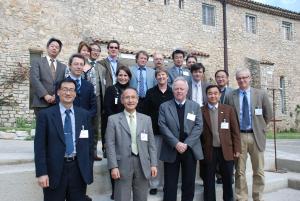Challenging, but not impossible
In March this year, the ITER Council Management Advisory Committee decided to set up a small working group comprised of a limited number of specialists with expertise in the area of tokamak assembly, and the assembly of other fusion-related devices. Their role was to assess the viability of the ITER installation and assembly plan leading to First Plasma in November 2019 and on to deuterium-tritium (DT) operation in 2026.
This week the working group chaired by Remmelt Haange, Technical Director of the Wendelstein 7-X Stellarator Experiment in IPP Greifswald, Germany and including participants from the Domestic Agencies, convened in Cadarache for a full five days. It examined the path forward, assessing whether the operational aspects of testing and commissioning all systems have been taken into account, as well as French labour law issues, and global transport and logistics issues.
"Meeting the goal is possible," Haange summed up the outcome of the four-day effort. "By looking at it from all angles we have identified a number of issues that need to be addressed in order to mitigate eventual risks. The ITER Organization will act on these." The Chairman added that he was "very impressed by the work that was done within a very short time. We were given an enormous amount of information."


